Je ne sais quoi: Fédération Française de Tennis and HBS bring game, set and match to Roland Garros in first year of partnership
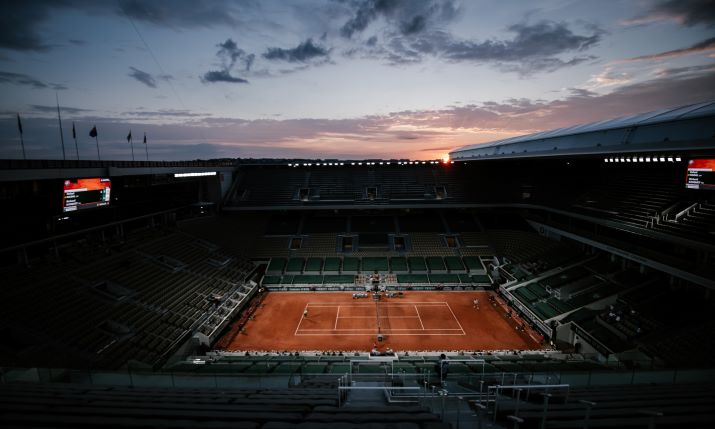
Rafael Nadal faces off against Richard Gasquet on the Philippe Chatrier court at Roland Garros 2021
The French Open is taking place once again at Roland Garros in Paris, yet it is all change for this Grand Slam. 2021 sees the Fédération Française de Tennis (FFT) and its new host broadcaster, HBS, taking the production over from France Télévisions for the first time, as well as bringing in a plethora of enhancements for the production and to support rights holding broadcasters.
This year HBS has taken over the host broadcast of Roland Garros, stepping into the shoes of France Télévisions, which had covered the event for the last 30 years. France Télévisions had most recently been in charge of the production for the seven main courts, while FFT produced the outer courts remotely.
The FFT, with HBS, is producing a phenomenal amount of coverage in this first year of their partnership, despite the pandemic, with coverage of all courts including UHD HDR on the Philippe Chatrier court, with HDR SDR on Suzanne Lenglen, Simonne Mathieu and court 14.
Speaking to SVG Europe, Emilie Montané, director of media and production at the FFT, says: “Normally 841 matches are produced. This year because we don’t have the Legends [Trophy Tournament] we will only produce 832 matches. But this is like two football seasons in France; it’s more than 5,000 hours of programming. It’s really huge.”
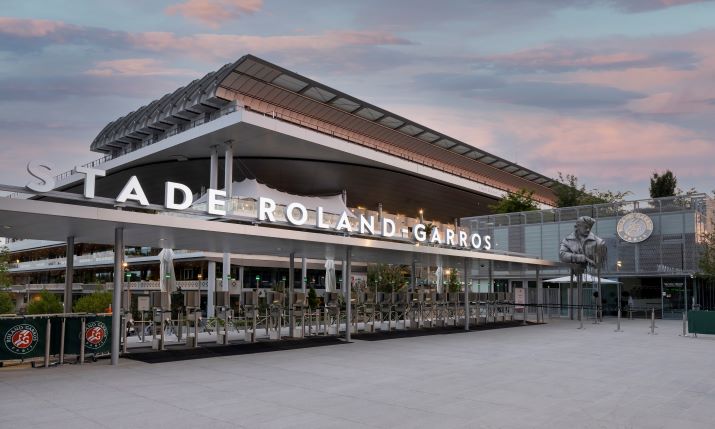 Taking control of the Grand Slam
Taking control of the Grand Slam
Montané explains why FFT decided to take the production of this Grand Slam inhouse: “Back in 2019 when we launched the domestic tender, we decided that the national broadcaster would not be host; the packages in the tender we [meant] it would be weird to have, let’s say, a broadcaster producing matches for another incumbent. So we decided to inhouse it.”
“We are the first tennis event to have a media server. It’s big news for this year. We know there is one for the Olympics and the World Cup, but as far as tennis is concerned I think it is the first time the broadcaster can use a media server”
She adds: “On top of that we wanted to be more in control of the production and to control the investment we wanted to make, which at some points was very difficult with France Télévisions, because they have a different financial agenda. They were more or less [interested in] saving than investing, and asking over time for them to, let’s say, put a spider cam in or to put another camera or whatever in, they would say, “no, we want to make some cost savings”, which was not compatible with the way we wanted to handle the production for a grand slam tournament.”
On top of these considerations, France Télévisions was also producing a more unilateral feed style, rather than a multilateral feed, which, says Montané, “the feed that they were producing was very France Télévisions-like, and not too much international, which had led us [also to want to] inhouse the production”.
After that the FFT launched a tender and selected HBS as the producer for the tournament on their behalf for the next three years to the 2023 French Open. The FFT has created a steering committee including HBS to focus on the production for the tournament, “because we want to be in control of it,” notes Montané.
Enhancing coverage for viewers
For all media – broadcasters, HBS staff and others – there are over 2,000 people on site during the tournament. Over 600 of that figure are HBS crew. The reason for the high number of HBS crew is due to an increase in new cameras at this year’s French Open. Montané explains: “This year we have really enhanced the coverage of Roland Garros. Not only have we added extra cameras on the Philippe Chatrier, Suzanne Lenglen, Simonne Mathieu [courts], cameras like the baseline camera, the towel camera, the tactical camera, but we have also improved and enhanced the service to broadcasters and the access to content [for them].”
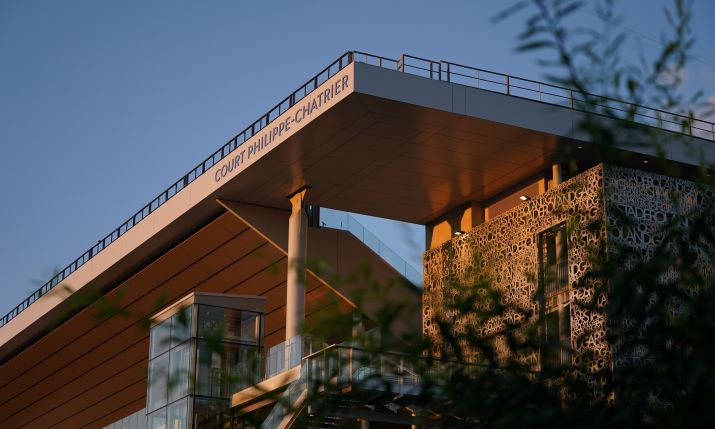
As of 2021, all the courts at Roland Garros are produced within the new TV compound, with HDR SDR on Suzanne Lenglen, Simonne Mathieu and court 14, and Philippe Chatrier produced in a UHD HDR truck in the same area
There are a number of new enhancements for this year’s coverage of Roland Garros, not least of which is the fact that the FFT has beaten the rest of the Grand Slam venues to a media server, a first for 2021. “We are the first tennis event to have a media server,” says Montané. “It’s big news for this year.
“We know there is one for the Olympics and the World Cup, but as far as tennis is concerned I think it is the first time the broadcaster can use a media server. We have access either onsite or outside and the quality is incredible, they have all live and non-live content on the platform and the level of satisfaction from all the broadcasters is really good; everybody is very happy. So we have lots of people managing and monitoring that, and being available for the broadcasters to make sure they find the right content at the right place, at the right moment.”
Adding to that sense of je ne sais quoi is a huge addition for viewers oversees; beauty cameras that show off not only the layout of Roland Garros, but of Paris as well.
Montané explains: “We have enhanced the beauty cameras that we have on site. I think when you watch Roland Garros from abroad it’s very important you realise what the stadium looks like. It’s been very difficult for us to [set up] a cablecam from [the top end of the venue] to the very bottom of the stadium, so [instead] we’ve covered the whole site with very different types of set ups [to create that type of aerial shot].
“We have a cablecam from the Suzanne Lenglen [court] up to after the Philippe Chatrier, a new a Spidercam on the Philippe Chatrier court, and then we also have cameras that are located facing the Simonne Mathieu, and a beautiful Paris view, and another camera at the opposite side of the stadium showcasing the annex [outer] courts,” continues Montané. “Again this is something we have invested in, giving new images of the brand new stadium worldwide.”
Gravity Media is providing Roland Garros with all the production galleries for the outer courts (Simply live Vibox, one AFC100 head and two UE150 robotic heads), plus beauty cameras, netcams and video referees.
Roland Garros has also inhoused the line calling service this year for the first time, using HawkEye. Although on clay court tournaments line calling is not mandatory, instead relying on the umpire to make the final decision, the FFT has chosen to bring the same look, feel and usage to all courts and graphics on its unilateral coverage. Previously, individual broadcasters would use their direct relationship with Hawkeye to show the line calling graphic on their own private signal.
Also new for this year is an automatic highlights package from Infosys for broadcasters to access, to clip live footage in real time for broadcast or digital content usage.
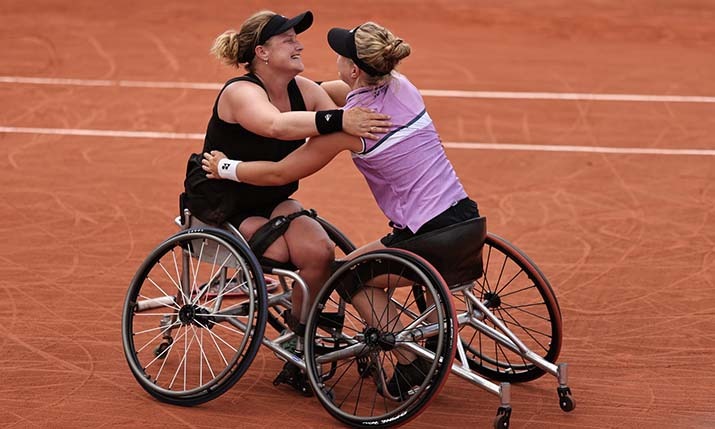
Aniek Van Koot and Diede de Groot win the final of the ‘Fauteuil Double Dames’ at this year’s Roland Garros
Preparing for the 2024 Olympics
The FFT is also on a mission with the TV compound, which is also brand new this year. The TV compound, set up in temporary cabins on location, provides 4,000 square metres of production space including the MCR, transmission, and TV studios for all the broadcasters on site.
France Télévisions used to have six to seven OB vans on site to produce all the courts. Notes Montané: “This is something that has changed this year. As of this tournament, all the courts are produced within the new TV compound bar Philippe Chatrier, which is produced in a UHD truck in the same area.”
“We are Paris, we are elegant, we are food culture; we are a lot of things on top of the sport of tennis and we want the viewers to really realise that they see the stadium in the centre of the capital very near the Eiffel Tower”
This temporary TV compound is a work in progress, says Montané. The goal is to test the set up year on year in terms of production and workflows to find the best working solution for both the host broadcast and rights holders, looking ahead to the 2024 Olympics and Paralympics, when Roland Garros will host the tennis for both events.
“We’re going to be working year on year to make sure we have the utmost optimised set up in the Olympics perspective,” notes Montané. She adds that the FFT has not yet made a final decision on whether the 2024 TV compound will be a bricks and mortar investment, or temporary cabins.
Roland Garros is a smaller stadium than many Grand Slam locations, which has raised the question of whether more of the French Open’s production should be carried out off site. Montané explains: “The stadium remains really packed and tiny compared to a lot of them. We had to face some challenges with our management and our board, because they challenged us on the fact that maybe we should externalise some of the production. As of today, only the logging system is outside of the stadium. Otherwise the courts that are remote are [now] produced on site [but] may [in the future] be produced off site if necessary.”
She continues: “We think to have the safest production, even the fact that we are an international event, we have pre-cabling all over the stadium, etc, we think it makes sense to have as much of the production on site and not to relocate outside because it’s simpler for everyone.”
In a regular year there are up to 12 broadcasters on site producing Roland Garros coverage. Comments Montané: “I think this is something very specific as well to our tournament [with so many broadcasters on site]. I think the broadcasters are coming to Roland Garros because of the atmosphere and they feel they enough space to produce content that is really specific [to this venue].”
However this year, due to global circumstances, there are just 10 broadcasters on site, with the Tennis Channel and France Télévisions both with large set ups, including its own OB van on site for France Télévisions, and all others using smaller crews than in previous years.
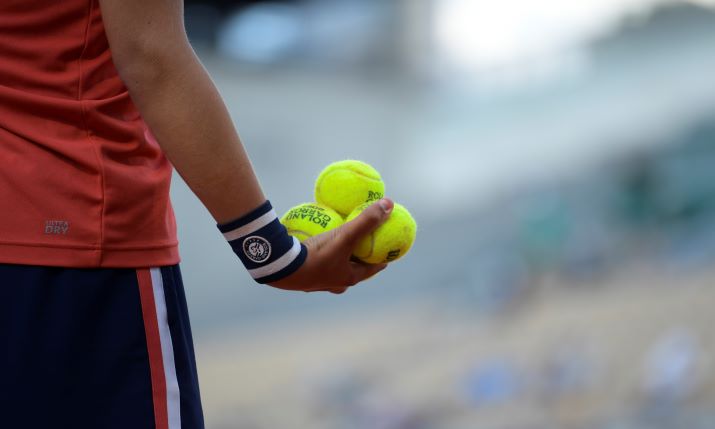 Parisian style is Roland Garros
Parisian style is Roland Garros
Creating that sense of Parisian style is important for the FFT this year. Montané explains: “What we want to achieve as well is keep the flavour that Roland Garros has and not to be like [just another] tournament in the year that has the same kind of set up and production [as the others]. We are Paris, we are elegant, we are food culture; we are a lot of things on top of the sport of tennis and we want the viewers to really realise that they see the stadium in the centre of the capital very near the Eiffel Tower. This is really key to us and is a guideline we’ve given to our directors.”
On the directors, the FFT has selected a mix of French and international directors for the first time. “We decided for the first time to have six of [the directors] for the three main courts; three French ones and three international.”
The international directors are Guy Tassel of Grand Slam and ATP Tour fame, Dan Hudson who has worked for AELTC Wimbledon Championships and Six Nations rugby, and Kate McKeag, “so we have one woman, and I’m very proud that we managed to have one woman in the crew!” says Montané. McKeag also covers Wimbledon.
The French directors are Laurent Lachand, well known for football. “It will be the first time he directs tennis,” says Montané. “Also we kept Fred Godard, who used to do the tournament for ages, and we have also from France Télévisions Cyril Martinetto, who is also part of the crew. It’s very unusual to have a mixture of local and international directors; this is another angle and something that we are very happy about. On top of that we have other crew members and directors on the other courts.”
Roland Garros is televised by 170 broadcasters around the world, from whom the FFT gathers as much feedback as possible to influence its production of the annual event. Comments Montané: “Although the work of France Télévisions, our host broadcaster for 30 years, was really first class material, we think we could have a more international approach in the feed we produce for our broadcasters all over the world.
“We wanted to be more international, which is why we have onboarded international directors to help us, but keeping the French touch as well with the French ones,” she concludes.

